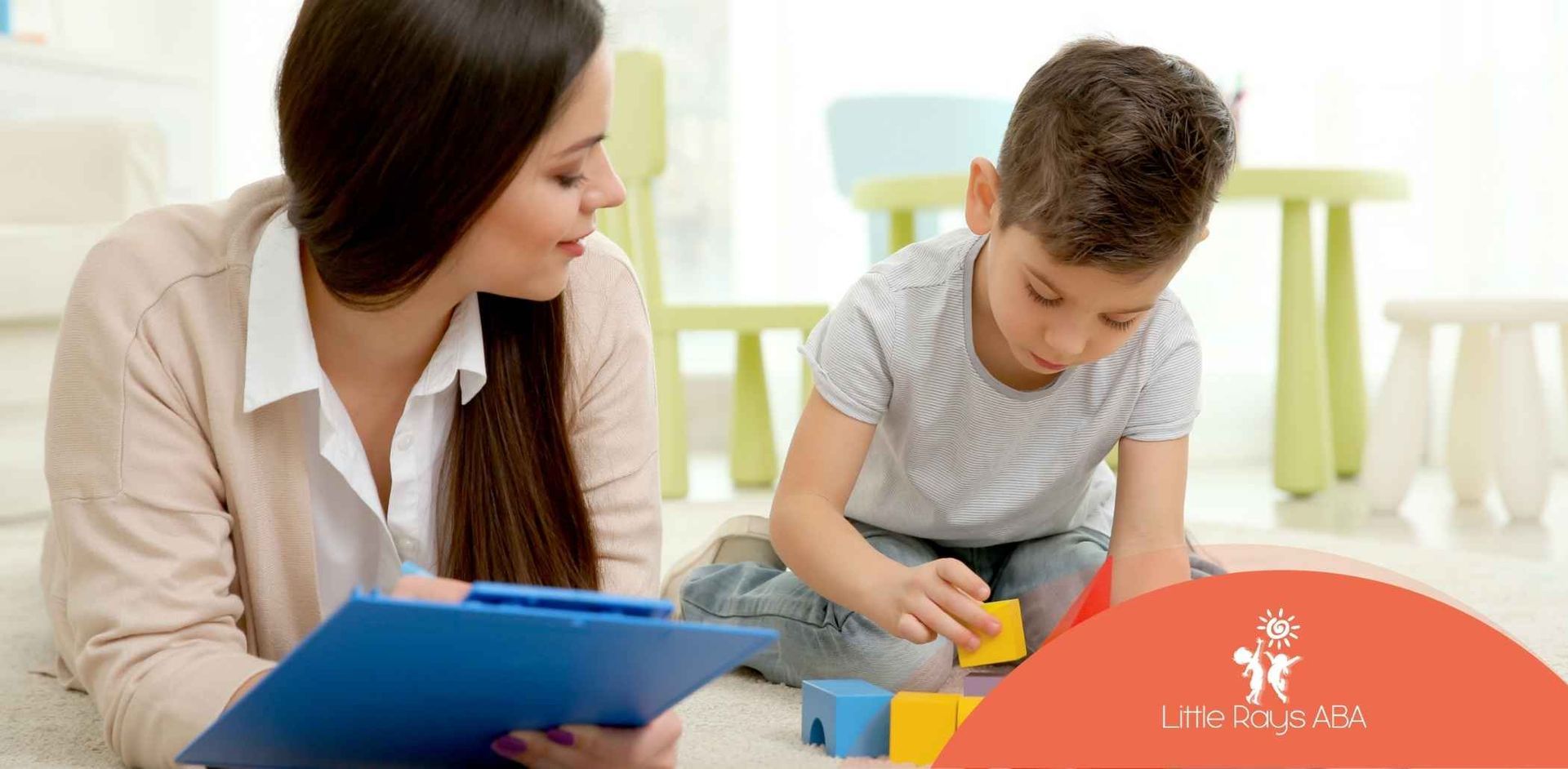
Understanding ABA Therapy Duration Guidelines
Applied Behavior Analysis (ABA) therapy is a helpful way to support children who have autism spectrum disorder. The main goal is to develop life skills, how they talk, and their behaviors. It is also used to work on hard or challenging actions. Still, it can be hard to know how long ABA therapy should go on for. The length can change based on a child’s age, how strong their symptoms are, and how they grow or change over time. In this blog, we will look at the length of therapy, what most experts say about the time needed, and how ABA therapy plans can be changed for each child’s unique needs. This will help create better results in their daily lives.
Overview of ABA Therapy and Its Duration Recommendations
ABA therapy helps people with autism spectrum disorder learn new skills and act in more helpful ways in different environments. Certified professionals use behavior analysis when they make treatment plans. The therapy plans are made to fit the goals and needs of each person.
The duration of ABA therapy can be different for everyone. It depends on things like the age of the child, how strong the symptoms are, and how much therapy the child gets. Parents and caregivers often do ABA therapy for years to help with their child’s growth. The time spent in therapy changes as their child gets closer to reaching individual goals and important steps in their life.
What Is ABA Therapy?
ABA therapy uses a research-backed way to help children learn. It works by teaching new skills and encouraging good behaviors through clear steps. The methods used in ABA therapy come from the science of behavior analysis. The goal is to make good changes that matter in everyday life. Certified behavior analysts make special plans for each child. They often help children and families who have autism spectrum disorder. Their work focuses on problems with speech, making friends, and basic life skills.
The most important ideas in ABA therapy are positive reinforcement and made-for-you planning. People use positive reinforcement to help children want to try new things. When the child does something right, they get a reward. This makes learning more fun and makes them want to keep trying. Another big part of this therapy is breaking hard things into small, easy steps. These steps help children learn new skills, one by one. With these ideas, ABA therapy helps the child grow and enjoy learning.
Aba therapy is about helping children for life, not just for now. It is made to help them take what they learn and use it in new places. As children learn important skills, they get ready to handle more things on their own. With the right support, they can be more ready for life as grown-ups. This gives them the power to do well at home, school, and everywhere else.
General Guidelines for Therapy Length
ABA therapy duration can be different for each child. The length of the therapy depends on their needs. Most children are in ABA therapy for about 3 to 5 years. The focus is on early intervention and intensive therapy at the start. This helps them make steady progress in important areas like communication and ways to cope.
Usually, ABA therapy takes a lot of hours each week—between 25 and 40 hours, especially during the early years. This busy schedule fits with how fast the brain grows in young kids. It helps with delays in development and builds foundational skills fast.
- Intensive therapy sessions are best during early intervention to help with symptoms of autism in many ways.
- Certified behavior analysts set up the treatment plans. They adjust these based on regular checks of how the child is doing.
- As kids get better and more independent, the sessions can happen less often. The main goal then is to use skills at home and in the community.
Moving to less intensive treatment is normal when children start to meet their big developmental goals.
Typical ABA Therapy Duration for Children
For most children, the length of ABA therapy is set up to get the best results in their growth. Children will usually need therapy for 3 to 5 years. At first, the therapy can be intense and may go over 25 hours each week.
As time goes on and the child makes progress, the plan changes. Clinicians start to pay more attention to helping kids use what they learn in other places and real situations. Each child has a treatment plan made just for them. This way, children with different skills get the right help for their unique needs. The main goal is for them to have good and lasting growth.
Average Years in Treatment
Most children stay in ABA therapy for about three years. Some may join the therapy for as little as 18 months, while others may get help for as long as five years. This depends on how severe the case is and what the therapy goals will be. ABA therapy often starts with a lot of time and focus. The plan for each child changes as time goes on. Kids have regular check-ins so the plan can match what they need right now.
| Phase | Focus Areas | Duration |
|---|---|---|
| Intensive Phase | Building foundational skills like communication | 1-3 years |
| Maintenance Phase | Reinforcing acquired skills | 6-18 months |
| Follow-Up Phase | Monitoring progress, addressing emerging goals | Ongoing |
This clear path helps parents and caregivers see where their child is in ABA therapy. It also shows how the plan fits their child’s needs.
Recommended Weekly Hours for Effective Results
Research shows that intense therapy sessions, with 25 to 40 hours each week, can lead to significant improvements, especially in early childhood. These steady therapy hours help a child make big gains in language development, learn better social skills, and pick up more self-help skills.
Younger children can get the most out of higher weekly therapy hours because their brains are still in a very flexible stage. Certifying therapists watch how a child is doing and change the number of therapy hours to match the child’s progress and what’s happening in the child’s life. This way, intensive therapy remains helpful and does not lose its impact.
- A tailored approach helps keep therapy hours matched with the child’s learning level and goals.
- Intensive therapy plans work on the most important things first, helping younger children with stronger symptoms hit big milestones.
- As children master the basic or foundational skills and start to use what they have learned on their own in different situations, the number of therapy hours will go down.
This way of being flexible with therapy plans helps children make the most gains, but it does not put too much pressure on families.
The Initial Intensive Phase of ABA Therapy
The first year of ABA therapy usually has the most and the longest sessions. This time is very important. It helps children start to build big skills, like talking to others and dealing with challenging behaviors.
Early intervention in this stage is key. It takes advantage of how quickly the young brain can learn. The main work here is teaching important, basic skills. As kids make progress, the therapy hours can change. They can fit the specific needs of every child. This helps each child and the family keep growing without feeling stressed.
Importance of Early Intervention
Starting ABA therapy before a child turns three can help kids with autism spectrum disorder. Early intervention focuses on things like talking, making friends, and learning daily living skills. This gives them a strong base for all learning.
At this age, the brain can change the most. ABA therapists use this time to develop plans for needs such as trouble with speaking or social interaction. They make sure to look at each child’s unique needs.
When you put early intervention first, you will see quicker results and changes that last. Parents should look for help right away if they notice signs of the autism spectrum.
Intensity and Frequency in the First Years
During the first phase of ABA therapy, children spend more time and have more sessions. These sessions help kids get used to therapy. They also learn the basic skills of talking, making friends, and working through problems.
High-intensity therapy works well for those with challenging behaviors that are hard to change. In these sessions, children learn new behaviors. They also learn how to act in different environments and start to do things on their own. These are important steps in their growth.
After some time in ABA therapy, the amount of time and number of sessions go down. This change gives children the chance to use their skills by themselves. Moving from learning new behaviors to using them in different environments helps children keep growing over time.
Factors That Influence ABA Therapy Duration
The length of ABA therapy depends on a few things. The age of the child, how strong their autism spectrum disorder symptoms are, and what the child and their family want to achieve will all help decide how long therapy will last.
Certified behavior analysts check on the child’s progress often. They look at how the child is doing and make changes to the therapy plan as needed. This way, the child always gets good support for their needs. The goal is to help each child move toward more independence as time goes on.
Impact of Age and Developmental Level
A child’s age and stage of development play a big part in how long ABA therapy takes. Younger children get a lot out of intensive treatment. Their brains grow quickly at this age, so they can pick up basic skills faster.
Older children might not need to go as often. The focus here is to work on certain skills or to help with challenging behaviors, like aggression or trouble with talking. The aim with these kids is to help them become more independent and take part in social activities.
In the end, ABA therapy is shaped around a child’s strengths. This way, every child gets the most out of each session, making sure they make steady and lasting progress.
Severity of Autism Spectrum Disorder (ASD)
The severity of autism spectrum disorder (ASD) has a big impact on how ABA therapy is used. People can show mild or severe symptoms, so the way to help must change from one person to the next. A certified behavior analyst does a comprehensive assessment. This helps to find out each person's unique needs and strengths. After that, the behavior analyst can make a treatment plan that fits that person.
This plan helps focus the therapy sessions on the most important behaviors. It is useful to improve communication skills and social interaction and to deal with any challenging behaviors in the right way. By knowing how severe autism spectrum disorder is, people can make sure applied behavior analysis works better for those with autism spectrum disorder.
Individual Goals and Ongoing Progress Assessments
ABA therapy is built around individual goals that a certified behavior analyst sets during an assessment. In this type of therapy, people track progress closely. They make sure that strategies match up well with each person's strengths and weaknesses.
- Regular check-ups happen twice a year. These help the therapist change the therapy hours based on how things are going.
- Goals can change often. This way, new problems or big steps the child takes can be added right away.
- Each plan is custom-made. When someone becomes more independent, there is a slow decrease in therapy hours.
With ongoing checks in ABA therapy, families can feel sure about the way their child is growing and learning new skills.
Conclusion
To sum up, knowing about how long ABA therapy should last is important for parents and caregivers. Most kids take part in this therapy for about 3 to 5 years. At first, there is a lot of focus on more intense sessions when the child is young. Since each child is different, the length of therapy will depend on their own goals, how well they are doing, and how severe their autism spectrum disorder is. The family has a big part in this. When you help your child at home and keep up with what they learn, it can help a lot. By staying involved and talking often with the therapists, parents can help make changes when needed so the child gets the right support.
If you want to learn more about personalized ABA therapy for your child and how to meet different goals or change the therapy duration, reach out for a consultation.
Frequently Asked Questions
How many years does ABA therapy typically last?
ABA therapy can take about 3 to 5 years. The first part is usually a more intensive treatment. How long it will be for a child depends on what they need, how they do in sessions, and what goals are set by the ABA therapists. The plan changes to fit the child’s strengths and the things they work on during this time.
Can ABA therapy hours be adjusted over time?
Yes, the number of therapy hours can change as the child’s progress is checked. Experts do regular checks on how things are going. This helps them know when to change the plan, so the therapy fits what the child needs then. The aim is to make the work helpful but not too much for the child.
What role do parents play in ABA therapy duration?
Parents have a big part to play when it comes to making ABA therapy work well at home. They work closely with the therapist. They help their child use the skills that come from ABA therapy in everyday life. They also make sure the treatment fits their child's needs and helps them grow in the best way.
Sources:
https://www.autismspeaks.org/applied-behavior-analysis
https://moveupaba.com/blog/aba-therapy-duration/
https://www.levelaheadaba.com/blog/aba-therapy-session-duration
https://moveupaba.com/blog/aba-therapy-duration/
https://pediatricresources.org/the-benefits-of-early-intervention-aba-therapy/
Related Posts





